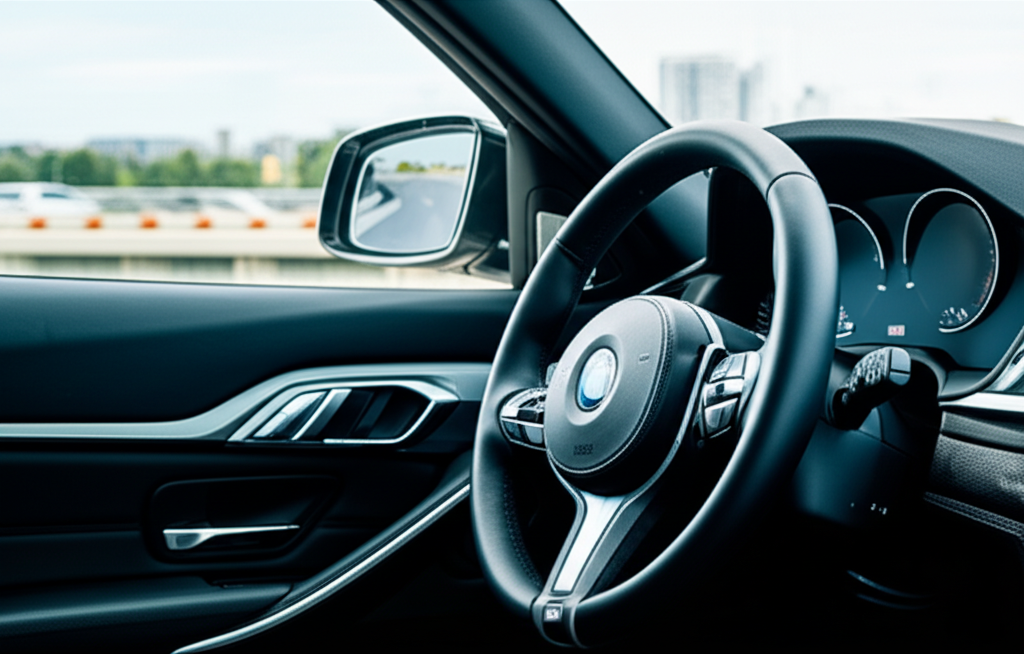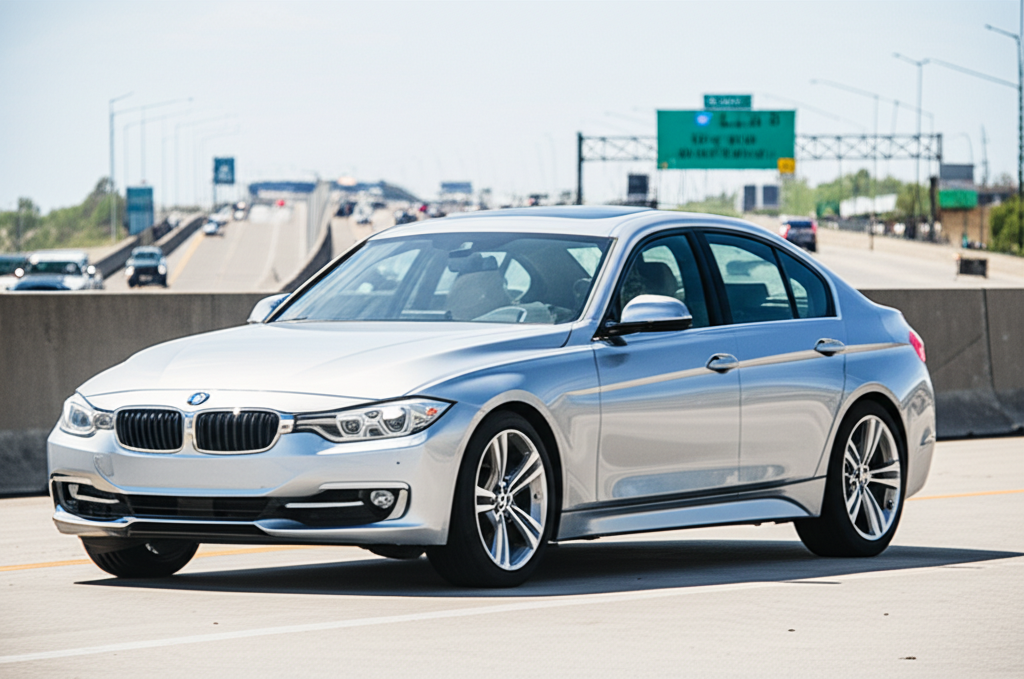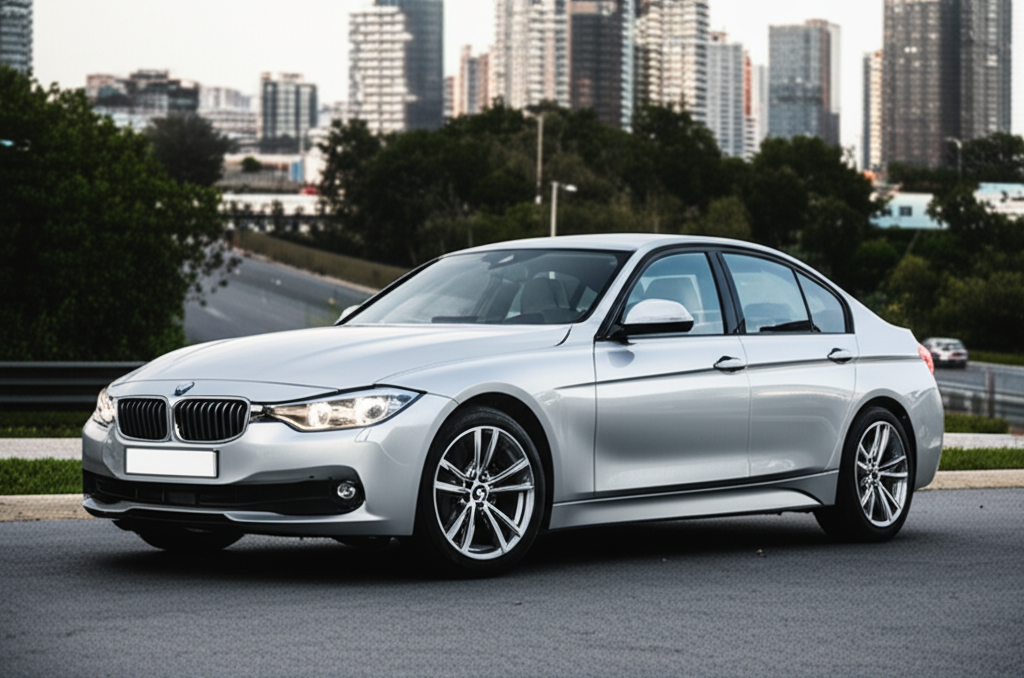BMW 3 Series Maintenance Cost: Top 6 Expenses

BMW 3 Series maintenance cost: 6 must-know expenses today.
Key Takeaways:
Factor in routine services like oil changes and brake checks.
Prepare for potential repairs on cooling systems or infotainment.
Understand tire replacement costs for performance models.
Budget for electrical system and sensor replacements.
Consider transmission fluid changes for longevity.
Factor in unexpected issues like fluid leaks.
Owning a BMW 3 Series is an experience many drivers dream of. It offers a blend of luxury, performance, and cutting-edge technology. But like any high-performance vehicle, understanding its maintenance needs is key. Many wonder, “What are the typical costs involved in keeping a BMW 3 Series running smoothly?” This guide will break down the top 6 expenses you can expect. We’ll make it simple, so you feel empowered to care for your German masterpiece. Let’s dive into the BMW 3 Series maintenance cost: 6 must-know expenses today.
In This Article
- 1 Understanding BMW 3 Series Maintenance Costs
- 2 1. Routine Scheduled Maintenance: The Foundation of Savings
- 3 2. Tire Wear and Replacement: Grip and Performance
- 4 3. Cooling System Repairs: Preventing Overheating
- 5 4. Electrical System Issues: The Modern Car’s Complexity
- 6 5. Transmission and Drivetrain Maintenance: Smooth Power Delivery
- 7 6. Suspension and Steering Components: For That Signature Ride
- 8 FAQs About BMW 3 Series Maintenance Costs
- 8.1 How much does a typical oil change cost for a BMW 3 Series?
- 8.2 Are BMW 3 Series expensive to maintain compared to other luxury sedans?
- 8.3 What is the most common costly repair for a BMW 3 Series?
- 8.4 How often should I replace the tires on my BMW 3 Series?
- 8.5 Is it cheaper to get my BMW 3 Series serviced at a dealership or an independent shop?
- 8.6 What maintenance items can I do myself on a BMW 3 Series?
- 8.7 Does BMW have a maintenance plan that covers these costs?
- 9 Conclusion: Proactive Care for Your BMW 3 Series
Understanding BMW 3 Series Maintenance Costs
The BMW 3 Series is renowned for its driving dynamics and premium feel. However, this sophistication comes with a maintenance schedule that requires attention. Unlike simpler vehicles, BMWs often utilize advanced engineering and specialized components that can influence repair and upkeep expenses. Understanding these potential costs upfront is crucial for any owner, whether you’re a first-time BMW buyer, an expat navigating the U.S. automotive landscape, or a seasoned enthusiast. This knowledge helps in budgeting and making informed decisions about your vehicle’s care. We’ll explore the most common areas where you’ll likely encounter BMW 3 Series maintenance costs, providing clarity and practical advice.
1. Routine Scheduled Maintenance: The Foundation of Savings

The most predictable and frequent BMW 3 Series maintenance cost involves the routine services recommended by BMW. These are designed to keep your vehicle performing at its best and prevent more significant issues down the line. BMW’s Condition Based Service (CBS) system often alerts you when specific maintenance is due, but understanding the general intervals is helpful.
Oil Changes and Filter Replacements
This is the bread and butter of car maintenance. For a BMW 3 Series, you’ll typically need an oil change every 10,000 to 15,000 miles, or once a year, whichever comes first. This interval can vary based on driving habits and the specific model year. Using high-quality synthetic oil, as recommended by BMW, is essential for engine longevity. The cost for an oil and filter change can range from $150 to $300, depending on the service center and the type of oil used.
Brake System Checks and Replacements
The performance of a 3 Series often means drivers enjoy its spirited handling. This can lead to more frequent brake pad and rotor wear. Regular inspections are vital for safety. When it’s time for replacement, BMW brake pads and rotors can be pricey. A full brake job (pads and rotors on all four wheels) can cost anywhere from $800 to $1,500 or more, depending on the specific 3 Series model and whether you opt for genuine BMW parts or high-quality aftermarket alternatives.
Fluid Levels and Flushes
Beyond engine oil, your 3 Series has several other vital fluids: coolant, brake fluid, power steering fluid (if applicable), and transmission fluid. BMW recommends periodic checks and flushes for these. For instance, brake fluid typically needs flushing every two years. Coolant flushes prevent corrosion and ensure proper engine temperature regulation. These services, often bundled with other maintenance, can add $100 to $300 per service.
Air and Cabin Filters
Replacing the engine air filter and cabin air filter is a relatively inexpensive but important maintenance task. The engine air filter ensures clean air for combustion, impacting performance and fuel efficiency. The cabin air filter improves the air quality inside your car. These filters usually need replacing every 20,000 to 30,000 miles. The combined cost for both is typically between $75 and $150 at an independent shop.
Table 1: Estimated Costs for Routine Scheduled Maintenance
| Service | Estimated Cost Range (USD) | Typical Interval |
|---|---|---|
| Engine Oil & Filter Change | $150 – $300 | 10,000 – 15,000 miles / 1 year |
| Front Brake Pads & Rotors | $400 – $800 | Varies significantly by driving |
| Rear Brake Pads & Rotors | $300 – $700 | Varies significantly by driving |
| Brake Fluid Flush | $100 – $200 | Every 2 years |
| Engine Air Filter Replacement | $50 – $100 | 20,000 – 30,000 miles |
| Cabin Air Filter Replacement | $50 – $100 | 20,000 – 30,000 miles |
2. Tire Wear and Replacement: Grip and Performance
BMW 3 Series vehicles are often equipped with performance-oriented tires that provide excellent grip and handling. These tires, while beneficial for driving dynamics, tend to wear faster than standard tires. The cost of replacing tires can be a significant part of BMW 3 Series maintenance cost, especially for models with staggered wheel setups (wider tires in the rear).
Tire Lifespan Considerations
Depending on tire quality, driving style, and road conditions, you might need to replace your tires every 20,000 to 40,000 miles. Aggressive driving, frequent cornering, and high-performance tires will shorten this lifespan. Proper tire inflation and regular rotations (ideally done during scheduled maintenance) can help maximize their life.
Cost of Performance Tires
High-performance tires for a 3 Series can range from $150 to $350 per tire, sometimes even more for very specific performance compounds or sizes. For a set of four tires, this can easily amount to $600 to $1,400, plus mounting and balancing fees, which can add another $100 to $200.
Wheel Alignment
After replacing tires, or if you notice uneven wear, a wheel alignment is recommended. This ensures your tires are wearing evenly and your car tracks straight. An alignment typically costs between $100 and $200. Forgetting this step can lead to premature tire wear, negating the savings from cheaper tires.
Pro Tip: When it’s time for new tires, consider all-season tires if you live in an area with varied weather. While they might not offer the absolute peak performance of summer-only tires, they provide better grip in colder temperatures and light snow, potentially saving you from needing a second set of winter tires.
3. Cooling System Repairs: Preventing Overheating

The cooling system is critical for maintaining your BMW 3 Series’ engine at optimal operating temperatures. Components like the radiator, water pump, thermostat, and hoses can degrade over time, especially in older models or vehicles that have not had their coolant flushed regularly. Issues within the cooling system can lead to overheating, which can cause severe and costly engine damage.
Common Cooling System Components
The water pump, often made of plastic in newer models, is a common failure point. When it leaks or fails, it needs immediate replacement. The thermostat can also fail, preventing proper coolant circulation. Radiators can develop leaks, and hoses can crack or burst. Replacing these parts is a significant expense.
Cost of Repairs
A failed water pump replacement can cost anywhere from $600 to $1,200. Thermostat replacement might be $300 to $600. Radiator replacement can range from $500 to $1,000. If multiple components fail simultaneously or if overheating causes engine damage, the BMW 3 Series maintenance cost can escalate dramatically.
Importance of Coolant
Using the correct BMW-approved coolant is essential. It contains specific anti-corrosion additives that protect the sensitive materials within the cooling system. Using the wrong type of coolant can lead to premature failure of these components.
4. Electrical System Issues: The Modern Car’s Complexity
Modern BMW 3 Series cars are packed with sophisticated electronics, from advanced infotainment systems and driver assists to complex engine management and lighting controls. While these features enhance the driving experience, they also introduce potential points of failure that can be costly to diagnose and repair.
Common Electrical Faults
Issues can range from malfunctioning sensors (like ABS, O2 sensors, or camshaft position sensors) to problems with the battery, alternator, or starter. The complex wiring harnesses themselves can also develop issues. Infotainment system glitches, like iDrive malfunctions, can also occur.
Cost of Diagnosis and Repair
Diagnosing electrical problems in a BMW can be time-consuming and expensive. Dealerships and specialized independent shops use advanced diagnostic tools. Replacing a faulty sensor might cost $200 to $600. A new alternator could be $500 to $1,000. Battery replacement, while common across many cars, is often more expensive for BMWs due to specific battery types and the required programming when installed, often ranging from $300 to $600.
Battery Maintenance
BMW batteries are often AGM (Absorbent Glass Mat) batteries, which are more expensive than traditional lead-acid batteries. They also require specific charging methods and often need to be registered with the car’s computer after replacement to ensure optimal performance and lifespan. You can find more information on battery types and maintenance on the U.S. Department of Energy’s resources on vehicle batteries.
5. Transmission and Drivetrain Maintenance: Smooth Power Delivery
The 3 Series is celebrated for its engaging driving experience, which heavily relies on its transmission and drivetrain. Keeping these systems in top shape is vital for performance and longevity. Automatic transmissions, in particular, require specific care.
Automatic Transmission Fluid (ATF) Changes
While some manufacturers market their automatic transmissions as “lifetime fill,” BMW recommends periodic ATF changes, especially for older models or those with higher mileage. The recommended interval can vary, but many independent specialists suggest a change every 60,000 to 80,000 miles. This service involves replacing the fluid and often the transmission filter. The cost can be substantial, typically ranging from $500 to $1,000, as it’s a more involved process than a simple oil change.
Manual Transmission Service
If your 3 Series has a manual transmission, it will also require fluid changes, though usually less frequently than automatics. This is generally a less expensive service, often in the $150 to $300 range.
Drivetrain Components
Other drivetrain components like driveshafts, CV joints, and differential fluids also require attention. While less frequent than fluid changes, their eventual replacement or repair can be costly. A differential fluid change might cost $100 to $250.
Table 2: Estimated Costs for Transmission and Drivetrain Services
| Service | Estimated Cost Range (USD) | Typical Interval |
|---|---|---|
| Automatic Transmission Fluid (ATF) Change | $500 – $1,000 | 60,000 – 80,000 miles (recommended) |
| Manual Transmission Fluid Change | $150 – $300 | Higher mileage intervals, check manual |
| Differential Fluid Change | $100 – $250 | Varies by model and use |
| Driveshaft/CV Joint Repair | $400 – $1,000+ | When symptoms appear (noise, vibration) |
6. Suspension and Steering Components: For That Signature Ride
The sophisticated suspension and steering systems of the BMW 3 Series contribute significantly to its renowned handling and comfort. Over time and with mileage, components can wear out, impacting ride quality, steering precision, and safety. Addressing these issues promptly maintains the car’s driving pleasure.
Common Wear Items
Components such as shock absorbers, struts, control arm bushings, tie rods, and sway bar links are subject to wear and tear. As these parts age, you might notice symptoms like a rougher ride, clunking noises over bumps, or vagueness in steering feedback.
Cost of Suspension Repairs
Replacing struts or shock absorbers is a significant job. A full set replacement for a 3 Series can cost between $800 and $1,800, depending on the brand of parts used and labor rates. Control arm bushing replacement can also be costly, as often the entire control arm needs to be replaced, potentially $500 to $1,000 per axle. Tie rod ends are less expensive, usually $200 to $400 per side, including alignment.
Importance of Alignment
After significant suspension work, a wheel alignment is almost always necessary to ensure proper tire wear and handling. This is typically an additional $100 to $200 cost. You can find general information on vehicle suspension systems from reputable sources like the National Highway Traffic Safety Administration (NHTSA).
FAQs About BMW 3 Series Maintenance Costs
How much does a typical oil change cost for a BMW 3 Series?
A standard oil change for a BMW 3 Series, using synthetic oil and a quality filter, typically costs between $150 and $300 at a dealership or a reputable independent mechanic. This can vary based on your location and the specific oil grade required.
Are BMW 3 Series expensive to maintain compared to other luxury sedans?
Generally, BMW 3 Series maintenance costs are on the higher side when compared to non-luxury brands, and often comparable to other German luxury sedans like Mercedes-Benz or Audi. The advanced engineering and higher cost of specialized parts and labor contribute to this.
What is the most common costly repair for a BMW 3 Series?
While unscheduled repairs can vary, common costly repairs often involve the cooling system (water pump, radiator), electrical systems (sensors, modules), and sometimes transmission issues. These can easily run into hundreds or even thousands of dollars.
How often should I replace the tires on my BMW 3 Series?
Tire replacement frequency for a BMW 3 Series depends heavily on the type of tires, your driving habits, and road conditions. Performance-oriented tires may need replacement every 20,000 to 40,000 miles. Regular inspection and proper maintenance can help extend tire life.
Is it cheaper to get my BMW 3 Series serviced at a dealership or an independent shop?
Typically, independent BMW specialists are more affordable than dealerships for routine maintenance and common repairs. However, dealerships offer specialized knowledge, genuine BMW parts, and the latest diagnostic equipment, which can be crucial for complex issues. For major repairs or warranty work, dealerships are often the only option.
What maintenance items can I do myself on a BMW 3 Series?
Basic tasks like checking fluid levels, monitoring tire pressure, and replacing cabin air filters can be manageable for DIY enthusiasts. However, most specialized maintenance and significant repairs on a BMW 3 Series are best left to trained professionals due to the complexity of the vehicle.
Does BMW have a maintenance plan that covers these costs?
Yes, BMW offers various maintenance plans and extended warranties that can help cover some of these routine and potential repair costs. Purchasing a Certified Pre-Owned (CPO) BMW often includes a period of complimentary maintenance. It’s always worth exploring these options when purchasing a vehicle.
Conclusion: Proactive Care for Your BMW 3 Series
Maintaining a BMW 3 Series involves understanding a range of potential expenses, from regular service needs like oil changes and brake jobs to more significant repairs involving its complex electrical, cooling, or drivetrain systems. By budgeting for these top 6 expenses – routine maintenance, tires, cooling system repairs, electrical issues, transmission service, and suspension components – you can better prepare for the ownership journey. Proactive care, regular inspections, and choosing a trusted mechanic, whether a dealership or a specialized independent shop, are key to minimizing unexpected costs and ensuring your 3 Series continues to deliver its signature performance and luxury for years to come. Driving a BMW 3 Series is a rewarding experience, and with informed maintenance, it can remain an enjoyable and reliable companion on the road.






